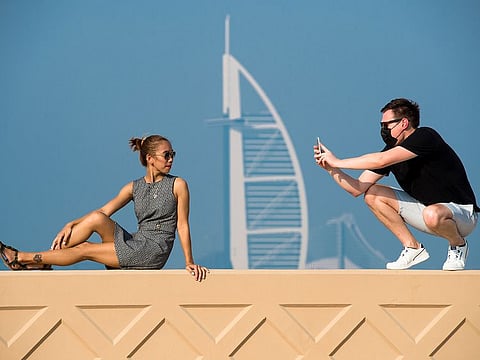At Dubai's luxury hotels, room rates are now even higher than in 2019
Another rise in staycation demand during upcoming Eid holidays could give further lift

Dubai: It’s again luxury leading the way in Dubai – this time in the hotel space, with summer room rates at some deluxe properties going past even 2019 levels.
In June, Dubai’s luxury hotels were showing an average room rate of Dh1,064, which is 29 per cent above 2019 levels, according to the consultancy STR. Hotels at the Palm and Dubai Marina are the ones experiencing higher room rates, even though average occupancy levels are still in the 59-69 per cent range.
The same upward mobility is getting more visible at more budget-friendly hotel stay options too.
“Looking at overall industry performance, noticeable gains have been recorded with year-to-date 61 per cent occupancy and Dh481 as average room date,” said Philip Wooller, Area Director for Middle East and Africa at STR, a hospitality consultancy. “However, it must be noted that the UAE [hotel sector] is still some way off 2019 levels even as significant progress is made.”
Another staycation?
Hotels are coming off a fairly strong showing during the Eid week in May, and another such week awaits during the upcoming Eid Al Adha break. Again, the focus will be on staycation guests – a focus that has not wavered for the better part of these 15 months (except for a short duration during November and December last).
The India return
When will the India flights happen? It is the one question airlines and many of the expats in the country are asking. It seems the hotels too have the same query. And There is growing expectation among UAE’s airlines and tourism entities that the ban on flights from India, which remains its single largest source of international visitors, could be lifted soon. If this were to happen, UAE hotels could see an improvement in demand over the summer, said Khatija Haque, Head of Research & Chief Economist, Emirates NBD. "A bigger headwind to the recovery of the tourism sector is the restrictions that have been imposed by other countries on their residents travelling to the UAE," she said.
Will they come?
This time, hotels will have to contend with residents opting for a break outside of the country. Each new destination that opens without any quarantine requirements is a possible competitor to a local stay.
"More countries are opening for travel and providing options for holidays, like Greece, Italy, Seychelles and the Maldives," said Wooller. "More outbound options could pressure occupancy in the UAE as residents head to alternative destinations after 16 months of effectively remaining within their own borders."
Hotel occupancy in Dubai slipped to 58.5 per cent in May from 59.4 per cent in April and 60.5 per cent in March. Revenue per available room (RevPAR) declined 13 per cent month-on-month in May, the first monthly decline since February. But occupancy was up 31 per cent compared to the same period last year when international borders were closed.
Summer occupancy
Occupancies are expected to be between 55-63 per cent on average with some submarkets pushing a little above that range. “Ajman, Fujairah and Ras Al Khaimah are likely contenders for higher-than-average occupancies,” said Wooller.
In Dubai, business is getting stronger in the more rate-sensitive areas of Al Barsha, Barsha Heights, Deira and Bur Dubai, where occupancies are tipping past 70 per cent. But average rates are still stuck below the Dh200 a night mark. “Much of the business in these submarkets are longer-stay guests, and occupancies should hover around the 65 per cent mark throughout summer,” said Wooller.
Sign up for the Daily Briefing
Get the latest news and updates straight to your inbox







